Welcome to Strings of Rage™ essential training. This is a complete & ongoing series specifically about fretboard visualisation. We are going back to basics & looking at absolutely fundamental required knowledge. Too many players do not have a solid understanding of what they are doing on the neck. This series will change that.
We’re going to show you how to break out of restrictive freeboard visualisation systems such as CAGED and 3nps. We want to prevent auto-piloting through large shapes and promote a truly concrete understanding of the guitar neck. We’ll do this using a highly adaptive and limitless intervallic thinking method which is used by many of our inspirations such as Per Nillson, Jack Gardiner, Tom Quayle and LoG to name a few.
HEADS UP : This is a theory heavy lesson but grab your guitar because we’re going to be applying this knowledge on the guitar towards the end. This lesson will require patience, brutal self honesty and the desire to improve.
In this first episode we’re going to have a brutally honest look at our understanding of intervals for guitar. All music consists of intervals so a complete mastery of intervals is essential. We’ve looked at intervals and interval functions in-depth before in this lesson and we’d recommend checking that out after this lesson too. We’ll look at how to apply intervallic thinking over the neck in order to see the neck as a whole. Thus breaking away from limiting alternative systems. If you can truly master the intervals for guitar, you’ll be able to do anything. Let’s do this!
Invest Your Time: 19 minutes

01: To Know What Intervals Are
02: Understand Why We Use Intervals
03: Understand Intervals
04: Understand Interval Functions
05: To Learn Interval Inversions
06: Learn All The Intervals In One Octave

01: What Are Intervals?
An interval simply refers to the distance between two notes. Specifically in this lesson and most importantly, the distance between a root note and another note. A series of intervals make up every aspect of music there is. Wether thats a scale, a chord, an arpeggio or even a whole fusion masterpiece. All music is composed by stringing together different combinations of intervals.
• Intervals that are played at the same time form a chord. This is called Harmony.
• Intervals that are played in single notes or one after another is referred to as Melody.
There are twelve different intervals that we need to study. We need to commit them to memory both visually on the guitar neck and also aurally for ear training. Is is imperative we know what each interval looks like in every permutation. However, we only need to do this in one octave.
There are twelve intervals because in the western world we have 12 notes which make up the chromatic scale.
The chromatic scale encompasses every single note. A, A#, B, C, C#, D, D#, E, F, F#, G, G#
Every single type of chord, scale, mode & arpeggio is a reduced ‘subset’ of intervals that can be derived from the chromatic scale.

02: Why Should You Use Intervals for Fretboard Visualisation?
Using intervals as your primary way of navigating the guitar neck will allow you to be in complete control of everything that you play. Thinking using intervals prevents you from auto-piloting through large shapes or relying on muscle memory. The ultimate goal is to be able to choose the notes you want as you play. We want to avoid letting a ‘scale shape’ or ‘arpeggio shape’ tell YOU what to play.
Further to this, using intervals allows you to see the guitar neck as a whole and not in large boxed patterns or ‘finger patterns’. This ultimately allows you to see every possible way of voicing a chord or mapping out scales and arpeggios. The interval method will also help prevent you from basing all of your chords, scales and arpeggios on low E or Low A string roots.
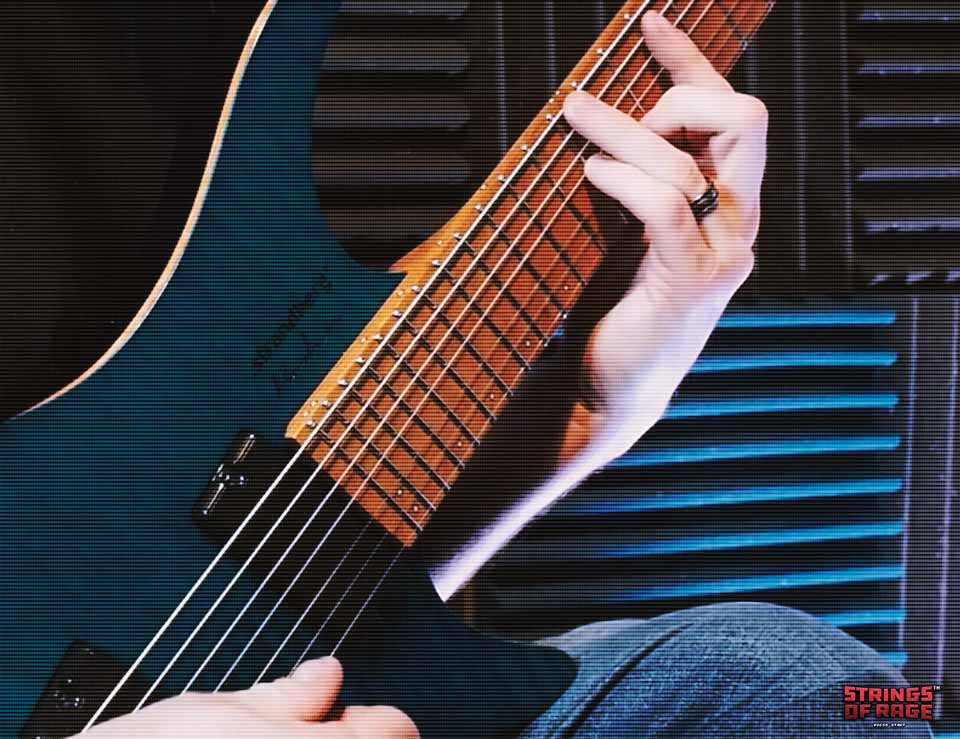
If you come from a box pattern background such as the box pattern pentatonics, the CAGED system or even the 3nps scale shapes, do not fear. This will act as a basis for you to build on. This new system will initially feel hard to adapt into to begin with. Your existing knowledge will only serve to reinforce this new methodology. Stick with us!

03: What Are Interval Formulas?
Formulas are a set of numbers from 1 to 7 that refer to the notes in a scale, chord or arpeggio. The formula is the blueprint of how a given chord, scale, mode or arpeggio is ‘built’.
Number 1 is always your root note. This is the note you are defining in a given situation as the root. It can be any note on the guitar neck. Your root note is what we use to compare all of our other notes against, again, in any given situation.
You will sometimes see the numbers, 9, 11 and 13 as well. These refer to notes that are an octave above the root you’re playing. 9 is the same as 2, 11 is the same as 4 and 13 is the same as 6, all just above the octave of the root.
Chord Spellings
It’s common to see and refer to chords and arpeggios with names such as add 9, or major 9th, or minor 11th for example. If you’re unsure about these types of things now, don’t worry. We’ll learn more about this type of ‘chord spelling’ and theory later on in the series.
Check out our forumla table below. If you’re an intermediate to advanced player, you’ve probably played some of these before but you might not have been fully aware of its formula.
Every chord, arpeggio or scale you ever play, regardless of how you play them, will have its own unique formula.
Each number refers to a note in your chord / scale / arpeggio and what type of interval it is and how it is ‘functioning’ against the root you’re playing from. More on interval functions below.
Heads Up! Important Reference:
You’ll sometimes also see interval forumlas shown as a series of half steps and whole steps, or tones and semi tones along with the numbering system. While this is still correct, we would encourage you to disregard that thinking altogether. It’s good to know this but this is NOT how the interval function system works. We do not need to be concerned with the interval distance between each pair of notes, but rather each interval compared to a root. More on this interval function thinking below.
We want this system to be generic. We want it to be generic so that we can apply this thinking anywhere on the guitar neck. Regardless of what root note we’re playing from, the visualisation system remains the same. This completely negates the need to have to remember lots of large shapes for all your scales, arpeggios chords etc. This is therefore one of the biggest advantages of this visualisation system. We can use this knowledge to break away from ‘stock’ box patterns and ‘stock’ chord shapes to see the neck as a whole.
The Mother of All Scales – The Major Scale:
The formula 1-2-3-4-5-6-7 is the Major Scale.
This is the ONLY scale in all of music to have all natural intervals. This means there is no sharp or flat intervals. You can play these intervals from any root note, anywhere on the neck and the formula stays the same. Even if you choose Eb or C# for your root note, the formula still remains 1-2-3-4-5-6-7
Every single other formula for literally everything else in music, wether thats a chord, an arpeggio or a new scale, will be derived from the major scale as a subset (a smaller selection of intervals), alteration to, or both. We can then use this as a way of comparing everything else by how it differs to the major scale. We’ll get deeper into the proper understanding of scales later in the series.
Sharp & Flat Notes VERSUS Sharp & Flat Intervals
Do not confuse sharp and flat notes with sharp and flat intervals. These are two completely different things.
Sharp and flat notes refer only to the notes that are within a given key, scale, chord or arpeggio. This is specific information and it can only ever be applied to one thing.
For example, an Eb Major triad will only ever have the notes Eb, G and Bb. However, its formula is 1 – 3 – 5. Similarly, a Db major triad has the notes Db, F and Ab but the forumla is still 1 – 3 – 5
To illustrate further, the E Major scale has the notes E, F#, G#, A, B, C#, D#. Thats 4 sharps within that scale but notice the forumla is still 1-2-3-4-5-6-7. No Sharp or flat intervals.
Similarly the A minor scale has the notes A, B, C, D, E, F, G. That’s all natural notes. No sharps or flats but notice however its formula is 1, 2, b3, 4, 5, b6, b7. This has a flat 3, a flat 6 and a flat 7.
Sharp and flat intervals refer to the type of each interval within a given formula. This is generic information and it can be applied to every single type of chord, scale, arpeggio etc. As long as you can internalise a forumla, and know what the intervals look like on the guitar, you’ll be able to play it from any single root note. Or indeed any note you desire, from anywhere on the neck.

04: What Are Interval Functions?
Understanding how intervals ‘function’ compared to a root note is the vitally important concept here. You should always be thinking from a given root note and how the other intervals ‘function’ in relation to it. As we said above, we do not need to be concerned with the distance between pairs of notes. For example, the major third to the fourth is a minor 2nd interval. We do not need to think on those terms. It’s good to know, however using intervals as your fretboard navigation method requires you to think using interval functions. Our interval table below illustrates this better.
Using Smaller Chunks of Information
We only have to learn each possible permutation of these intervals in relation to a root in one octave only. Once you reach the octave of your root, you can now reference the intervals from that root instead. This is how you begin to move across the neck with conviction. The only caveat here is that you’ll need to adjust each interval ‘shape’ when crossing the G and B strings to account for the standard tuning of the guitar. Smaller chunks of information, such as intervals in one octave are much easier to manipulate than large multi string shapes.
The absolute key thing here is always referencing intervals against a given root note at any time. Always know where your root notes are. Let’s’ say you’re playing ideas using Dminor7. If you you now want to change to play ideas using Cmajor 7th, you’ll be able to do so without thinking about shapes or positions. You just need to think from a new root note.
Thinking From A Root Note
When thinking intervals in relation to a root you’ll also need to know the ‘quality’ of the chord or riff you’re playing over. Is it Major? Minor? Dominant? Altered Dominant? Sus? Knowing chord quality will help your choice of notes. We’ll look at note choice later in the series.
Let’s say you’re playing over a basic A major triad, intervals R, 3, 5. We can refer to A as our root and play ideas around any A note on the neck. The most obvious thing to do is play the chord tones over the top, the R, 3, 5.
Intervallic Thinking
Thinking on a ‘per chord’ basis and thinking about interval functions will facilitate the most creativity. Some of you reading might say ‘well I could just play one scale / arpeggio over a whole chord progression’. Yes, you could do that. However the notes of your chosen scale / arpeggio will affect each chord differently. If you do not know the functions of each note against the chord or riff as it’s passing by, you’re are auto-piloting and you are not choosing your notes accordingly for the most interesting sound. Therefore you do not know what you are doing. Scale shapes are in control and you are not.
This ‘one scale fits all’ methodology only works for a while. You can sound great playing this way but your playing quickly ends up sounding bland and unoriginal. This ultimately leaves you feeling frustrated. We know this because we’ve been in that trap. We too have been left wondering how and why some players could harness all these amazing sounds on the fly and our playing always sounded the same no matter what we played on.

05: Interval Inversions
All interval combinations from a root have two possibilities. An interval inversion is where you consider the other note as a new root. Interval inversions are very easy to remember. All interval inversion combinations always add up to nine. Major Intervals become minor, minor intervals become major and perfect stay perfect.
Why do we need to know this?
Knowing interval inversions allows us to adjust our thinking on the fly. This facilitates playing all of our chords, licks, melodies and ideas from a new root in real time. Knowing interval inversions also means we don’t have make large jumps around the neck to transition to the next chord. This allows for smoother connections of ideas across the guitar neck.

06: All Intervals for Guitar In Relation to ‘A’
We encourage you to learn, memorise and completely internalise all the intervals. This is the goal. We’ve shown them all below. We would also encourage you to pick a root note other than A to reference from. Just so you’re not relying on our diagrams for A as the root! Pick one octave to learn all the interval permutations from. Then be sure to practice memorising them in different octaves on the neck.
Remember you only need to know them in one octave. When you reach the next octave of your root you can adjust your visualisation to think from the new root.
Ask yourself; what do each of the guitar intervals look like in one octave? How many ways can I play each interval in one octave?
Don’t just think in ascending manner either. Think about how you can go back down or across adjacent strings to each interval too.
The ultimate beauty of this method is realising that it allows you to think in all directions. Large scale and arpeggio shapes do not!
Be aware when crossing the G and B strings! The interval ‘shapes’ change to account for standard tuning of the guitar!
Final Thoughts on The Intervals For Guitar.
Learning the ‘Interval Visualisation Method’ really demands a lot of patience and desire to improve. You will really need to be honest and humble yourself with your abilities. Can you play an Aminor7 chord anywhere on the neck? Are you able to play it without the root note in the bass? Can you play a major 7th arpeggio with the 7th in the bass? Can you identify the intervals of the dorian mode on the fly as you play them? If you can’t then do you really know what you’re doing? You need to be brutally honest with yourself.
Put your ego and your ability to auto pilot using 3nps scale shapes to one side. Slow right back down and really invest the time to make a conscious effort to understand the guitar neck properly. This will yield much better results in the long run.
Trust us. We’ve made that transition and we’ve never looked back. We’ve become better players than we ever have been. We only wish this was taught to us 20 years ago.
Putting In The Required Time.
If you’re interested in becoming the most proficient player you can be, and are wanting to play without limits, then this method of thinking and using intervals for guitar is the only way to go. This is not a quick fix and there are no shortcuts. However, the reward of putting in the time and effort is far greater than the hurdle is to overcome to adapt to new thinking. Especially if you’ve come from a box pattern and 3nps background.


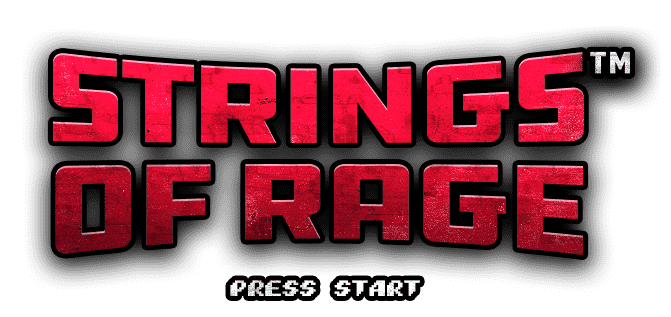
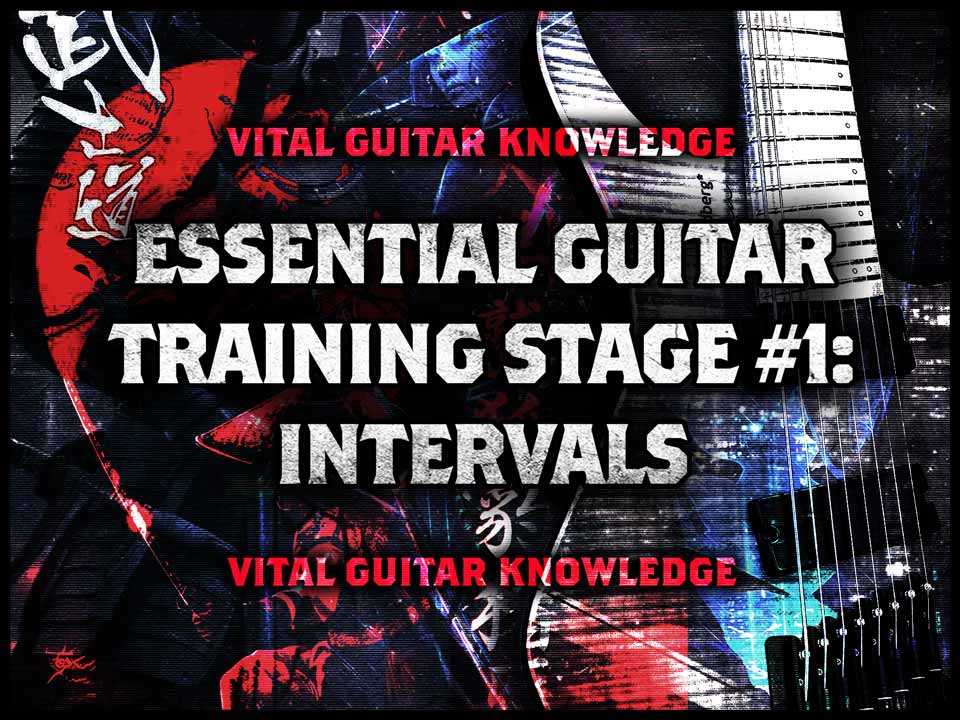
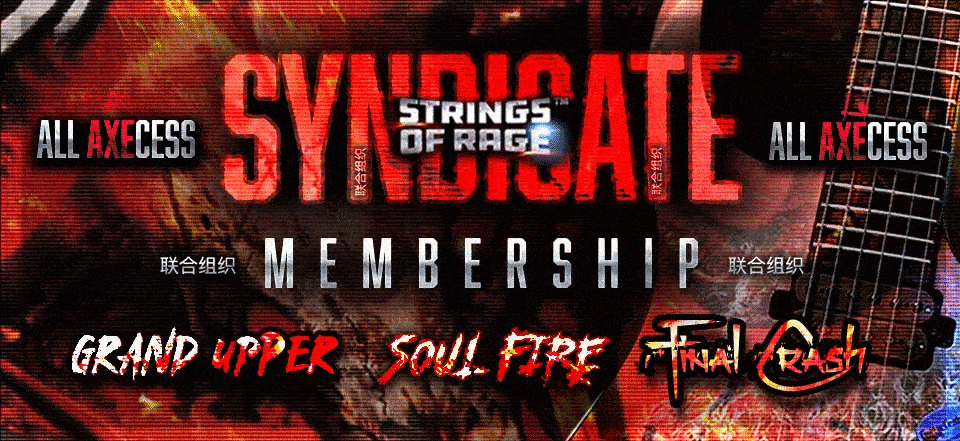



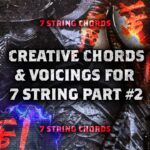


No Comment